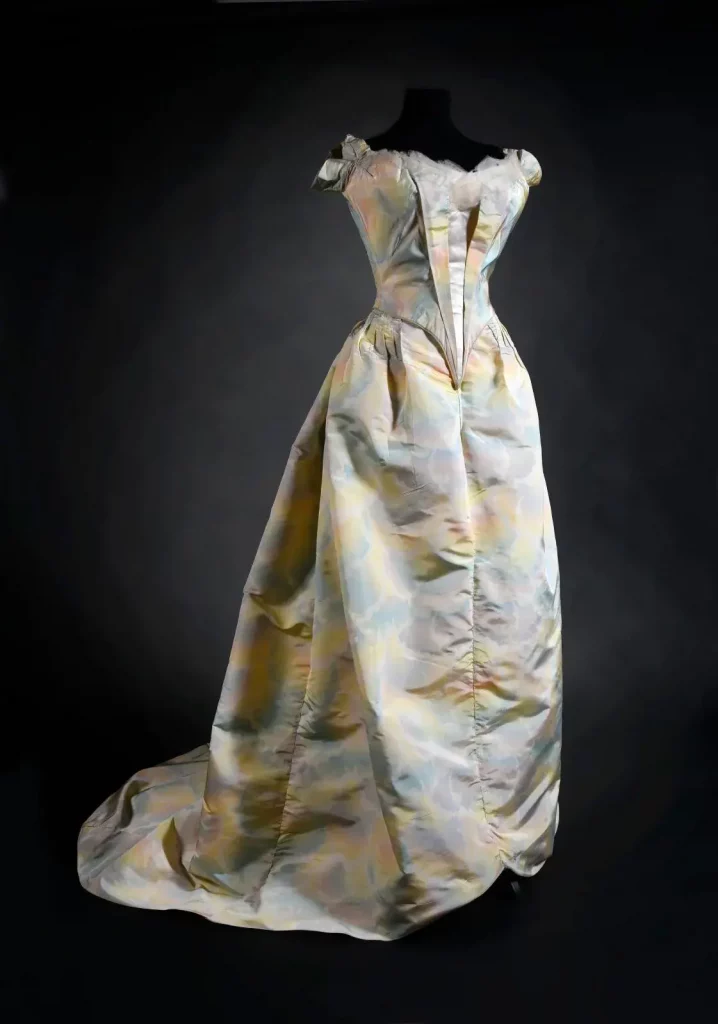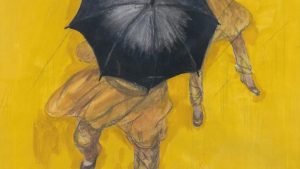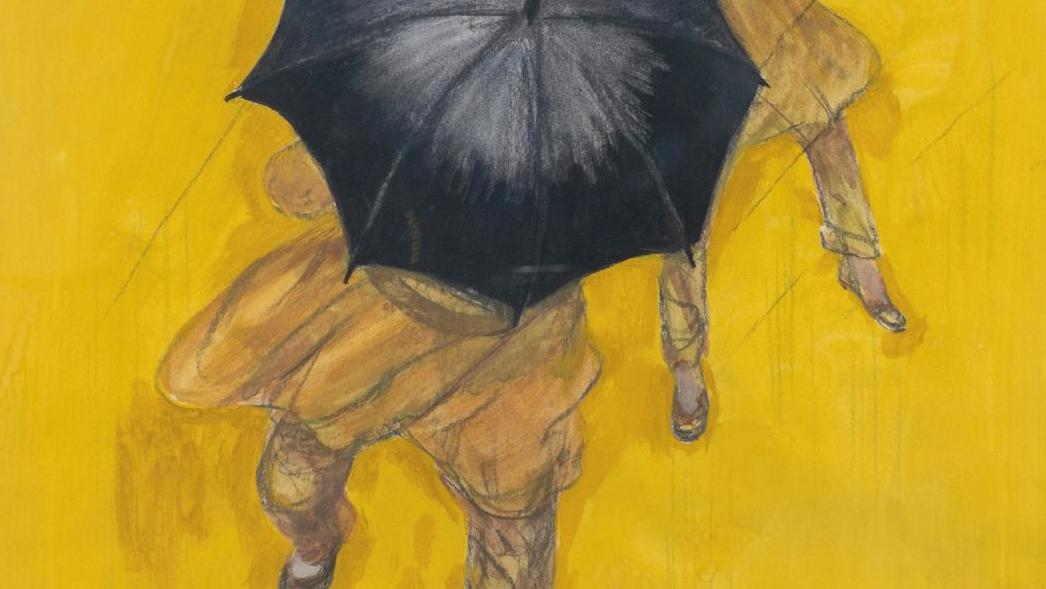An Invitation to the Ball with Magnificent Evening Gowns by Worth
A wardrobe in exceptional condition takes us back to the splendors of the late 19th century, staged by the leading couturier of the time.

Estimate: €2,000/3,000
Meticulously preserved in trunks, the ballgowns and evening dresses belonging to one of Worth’s most important clients are poised for an outing at the Hôtel Drouot, in eleven lots. Their condition is remarkable, as their owner’s descendants have taken excellent care of these collector’s items, storing them flat. Some very minor damage mainly concerns the most fragile components, like the tulle and silk chiffon trimmings on the bodices. As we know, these garments were designed to be worn only once, as was the custom in late 19th century high society.
The Secrets of a Style
140 years ago, the elegant woman involved here made her entrance at a formal dress ball in a costume inspired by Austrian folk costumes—a nod to her native country. It features a black velvet bodice with a fichu embroidered with cornflowers tied at the shoulders, and slashed sleeves revealing an organza bodice worn on top of a full, multicolored skirt in ombré-moiré Gros de Tours taffeta (€3,000/5,000).
For this outfit, she turned to the king of Second Empire celebrations, who also designed stage costumes: Charles Frederick Worth. He regularly supplied gowns for the many fancy-dress evenings hosted by the imperial couple. Between 1875 and 1885 (when this dress was created), the most famous festivities were held by the Princesse de Sagan and written up in the press, which published engravings immortalizing the most splendid costumes.
As the most fashionable outfits were those inspired by portraits of great ladies of the Ancien Régime, the young woman also commissioned a late 18th century-style gown (€700/1,000) for another occasion. With its short sleeves, Watteau pleats in cream silk satin embroidered with flowers and garlands and corslet girdle on a skirt with a bustle, this dress is similar to a model now in the Musée des Arts Décoratifs in Paris.
The other gowns, commissioned for more traditional (but no less refined) evenings, illustrate 20-odd years of creation and illustrate the development of Worth’s style. Little by little, the couturier lightened the feminine silhouette to concentrate on the beauty of the line, while retaining the use of luxury materials. We find several boned, pointed bodices with chiffon sleeves lavishly embroidered with silver sequins, glass or metal beads and rhinestones (€600/800); we also find two ball gowns from the 1900s with understated short sleeves and a neckline edged with ruffled tulle, which do away with opulent ornaments to focus on the look and the fine fabric (€2,000/3,000 each).
Their train—one of the company’s hallmarks of success since 1873—lengthens the silhouette, enabling the magnificent materials to be admired at leisure. A cream silk faille printed with an iridescent rainbow cloud pattern provides stunning appeal with its originality and modernity, while a velours au sabre decorated with flowering hydrangeas on a cream background illustrates marvelous relief effects. Woven like satin, the colored parts of this velvet were hand-shaved then brushed to highlight the pattern (a skill that has almost disappeared today), making the fabric’s colors and reflections vibrate in the subtly-lit reception rooms of the time.

Estimate: €2,000/3,000
Unique Pieces
Worth selected only the most noble materials, focusing on exclusive silks and designs. The way was led by Empress Eugenie addicted to the rich weaves of Lyon silk manufacturers. So without regard for the cost, the designer got his supplies from leading producers like Tassinari & Chatel. This factory founded in 1680 opened a Paris branch in Rue de Richelieu in the early 1870s. Worth was one of its first clients, and no fewer than 120 designs resulted from their collaboration. The components needed to weave them were destroyed after production to preserve the trade secrets of these commissions. The couture company also used other designs proposed by the factory.
As collectors of historical documents and antique costumes, the Worths who took over the reins in the 1890s—father and son Charles and Jean-Philippe—were certainly not short of inspiration, as witnessed by another ballgown. With the same type of cut as the previous ones, this was made in around 1895 in polychrome silk brocaded lampas called “reine des fleurs”, woven by Tassinari & Chatel using a design from the decor of Madame du Barry’s bedroom in Versailles. This model (€2,000/3,000), with pink and green garlands on a cream background, is similar to an evening gown in the same fabric with a yellow, green and white floral variation, now in the Musée Galliera.
Alongside the consistent group of dresses made for this grand lady between 1880 and 1900, the collection contains another Worth creation, this time dating from between 1920 and 1925: her daughter’s wedding dress (€600/800) in crepe de Chine. It is no longer swelled by a bustle, and no whalebone constrains the bust, which is left free under a slightly loose-fitting double-breasted bodice. The train is still present, as the occasion demanded, but it falls from the shoulders in the old way, not from the waist. The asymmetry of the draped skirt also provides an imaginative touch to this creation breaking with former dress codes. The Roaring Twenties certainly ushered in a fashion revolution.
WORTH IN
6 KEY DATES
1858
Creation of Worth & Bobergh
1870
Worth & Bobergh becomes Worth1895
Death of Charles Frederick Worth
1954
The company is sold to Paquin Ltd London
1956
The Paquin company closes
1967
The London Worth branch closes
FABRICS – ANTIQUE COSTUMES – WALLPAPERS
Tuesday 07 December 2021 – 14:00 – Live
Salle 5 – Hôtel Drouot – 75009
Coutau-Bégarie










